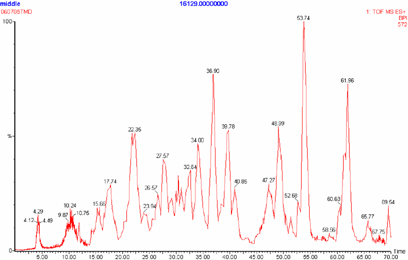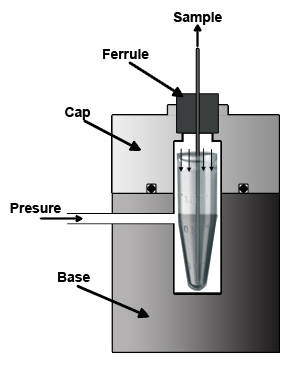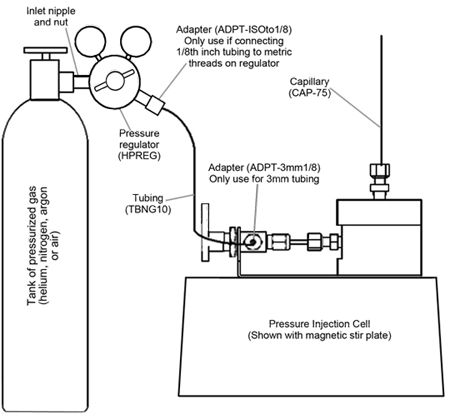Pressure Injection Cell Operation
Operationally, the pressure injection cell is analogous to a straw in a juice box. As you apply pressure in the box, the juice will be forced out through the straw. Likewise, the pressure injection cell is connected to pressurized gas, typically in a tank. A 0.5 to 2 mL tube containing the sample liquid is placed in the base of the pressure injection cell. A capillary is then placed through the ferrule in the cap and down into the sample tube. When packing a capillary, a frit assembly is placed at the distal end of the capillary to prevent particles from exiting and the entire pressure injection cell is typically placed on a stir plate. By regulating the gas pressure, you can adjust the flow rate of the sample into the capillary.

Sample Data
On the left is a LC/MS chromatogram of a peptide mixture prepared from a tryptic digested gel band, separated by a 5 µm C18 resin packed column (100 µm inside diameter by 10 cm long capillary). The Pressure Injection Cell was used to pack the LC/MS capillary column and to inject the sample into the mass spectrometer. Courtesy of Dr. Qishan Lin.



